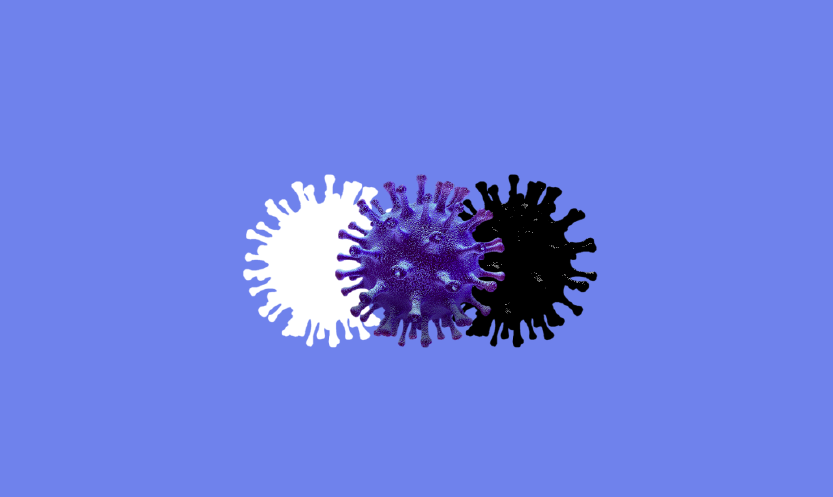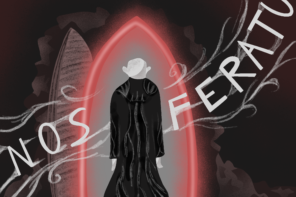It’s been ten years since I watched Contagion, yet even after all this time, there is one edit I remember like it was yesterday. Kate Winslet, who plays the hyper-professional doctor flown into Minnesota to combat the virus in the early days, somehow contracts it in her hotel room. After a few frantic phone calls, she’s wheeled off to the hockey rink where she set up the mass treatment camps. Some time later, a man beside her, frozen by the cold, begs a doctor for another blanket to no avail; there’s a shortage. She reaches to the man, a good six feet away from her, trying to hand him her parka, but he doesn’t notice her. Smash cut to her face with a plastic sheet over it. She’s lying in a mass grave.
I’m blown away by that cut from the coat to the grave: its economy, its coexisting kindness and ruthlessness. It’s as if Winslet was sliced open by the sharpness of the montage itself. It is, for me, the moment that unlocks Contagion. It demonstrates the quick, cutting nature of Soderbergh’s approach, as well as the humanity that underlies it. This film, which opens with Gwyneth Paltrow’s skull being sawed open and ends with a heartfelt makeshift prom, covers such a vast distance of tone, character, space and time, and yet through Soderbergh’s masterful approach, it is all unified.
This film […] covers such a vast distance of tone, character, space and time, and yet through Soderbergh’s masterful approach, it is all unified.
Contagion’s strengths and weaknesses were well-litigated soon after its release, and to be sure, the things that don’t work about it still don’t work – chief among them everything involving Marion Cotillard’s bizarre hostage subplot, which is introduced in one early scene and then resolved the very next time it re-emerges, a full hour later.
But the flaws with this film are easy to overlook given the scope of what Soderbergh achieves here. Simply put, he got it exactly right. Not just in terms of the vocabulary (among them “social distancing” and “basic reproduction number”), or because of the scenarios he depicts (the nightmarish runs to the grocery store, the right wing conspiracy theorists and their phony medicine, O’Hare shutting down), but because of the feel. Every time I’ve left my house to get groceries, or to go on a nighttime sanity walk, I think about that opening sequence, or that scene on the bus, every filthy, germy surface pored over by Soderbergh’s camera. I think of the forceful way he cuts between them, so quickly that the number of surfaces becomes more horrifying than the surfaces themselves. Soderbergh is not a subjective filmmaker, but the frenzied state of mind in these transit sequences is just so eminently relatable in times like these.
To match our sickly state of mind, we have a sickly green colour palette and a sense of movement that feels truly feverish. Soderbergh was an early adopter of digital cameras (and has since made the transition into hardcore iPhone shooting). Digital perfectly complements Contagion: the raw, off-white look of the images, the harshness of the natural lights, and the motion that appears just a bit too fast and too smooth all come together to create the germiest of cinematic affects, like the screen itself has come down with the sickness. Combine this with one of cinema’s most bizarre uses of a split-diopter lens (using the face of Paltrow as the dividing line between foci, exactly what they tell you not to do) and you get a film that’s simultaneously crystal clear and disorienting.
Soderbergh is not a subjective filmmaker, but the frenzied state of mind in these transit sequences is just so eminently relatable in times like these.
When Soderbergh introduces Kate Winslet’s character, a sharp, fact-spewing worker who can track the virus down through the sheer efficacy of her planning, it seems as if he’s introduced his director surrogate. The way she cycles through the people Paltrow met and the places she went, and then organizes all this information to narrow everything down to a single bus, seems to recall Soderbergh’s own process of editing the film in his head as he’s shooting it. Has anyone else ever killed their own surrogate character as ruthlessly as Soderbergh did in that coat-to-grave cut? Oh, to be killed by a Soderbergh edit.
As we stagger through the current Covid-19 pandemic, people are revisiting Contagion in droves. But why, at this moment in time, watch a film slick with the viscerality of disease? The nasty, two-note cough that opens the movie — that sort of sickly croak with a little catch in it — is enough to make anyone lean away slightly from the screen, triggering our instinct for self-preservation. The camera expresses a certain terror at its own proximity to the infection, eyeing, with disgust, the trajectory of the cough, following it from hand, to credit card, to hand, to machine and so on. In just a few seconds we can imagine the sprawling legacy of that single cough, and it is literally sickening.
Contagion’s allure, then, comes from its explicitly defined chronology — its consideration of the virus’ lifespan. Right now, most of our questions about the coronavirus are temporal: how much longer between now and the end? This kind of movie is the escapism we need: a bottled depiction of mass crisis from beginning to near-end, with comforting timestamps to chart the pandemic’s trajectory. It gives us a hypothetical to hang onto, and sometimes, when you’re scared and anxious and grieving, hypothesis is enough.
While the white-collar world of Contagion spends a great deal of its runtime trying to ensure physical distance between, well, all of humanity and implementing the same kind of guidelines that we’re bound by today, the film’s most urgent preoccupation is with the distance between crisis and calm. Can anyone really measure, for instance, the span between the pandemic’s peak and its end? How far away is the discovery of a viable vaccine in relation to a trial period and an approval period and a training period and, finally, a distribution period? And once that point is reached, of course, there’s the question that Contagion asks directly: “Who gets it first?”
Contagion’s allure, then, comes from its explicitly defined chronology — its consideration of the virus’ lifespan.
With that final question, the importance of distance becomes reversed — now it is a matter of proximity, a matter of who is closest to the front of the line that leads to survival. Those wielding the most power leverage it in their favour; think of Laurence Fishburne’s CDC head Dr. Cheever, whose attempt to usher his wife to safety ends in chaos, and who desperately tries to use CDC resources to favour Winslet’s Dr. Mears as she succumbs to the virus. With Cheever, Contagion offers a somewhat generous and sympathetic portrayal of corrupted officials — in real life, we have lawmaking ghouls like Senator Kelly Loeffler who exploit their positionality in service of their addiction to money and greed.
By contrast, the movie’s scientists break with procedure to close the distance between civilian and official. Dr. Ally Hextall (Jennifer Ehle), the CDC research scientist charged with developing a vaccine, must work within rigid institutional boundaries. It may come as no surprise, then, that all of the breakthrough moments in the film’s vaccine research occur outside of the system’s rules; first, when Dr. Ian Sussman (Elliott Gould) violates orders from the CDC and finds a cell in which to harvest the disease; and then again, when Ally evades bureaucratic procedures by testing a possible — and eventually successful — vaccine on herself.
As Covid-19 has spread, we’ve seen people let go from their jobs, kicked out of their homes and racked with stomach-turning medical expenses – but these are daily realities for many, even in the absence of a global pandemic. Reading about the film’s shoot, I came across a passage so terrifically cynical that it made me laugh, about Contagion star Gwyneth Paltrow’s takeaway from the film:
Despite being among the virus’ first victims, [Gwyneth] Paltrow believed that Beth was “lucky” as she thought the disease’s survivors were being left to deal with the newly difficult conditions of everyday life, such as finding food and potable water.
Yes — Gwyneth Paltrow’s interpretation of Contagion is that it would be better to be dead than poor. In real life, it appears that a growing chorus of the global political class agrees with her, albeit not in so many words. Think back to videos of President Trump, who shrugged his shoulders at the prospect of self-isolation, preferring instead to delegate death to the old and infirm. Leaders like him are the ones determining who reaches the finish line first and who might not reach it at all; Contagion is a comfort because, for better or for worse, it never quite brings us to the end of the race.









Very well written and informative. I agree that watching this film now is unwise. Thanks for a great read!